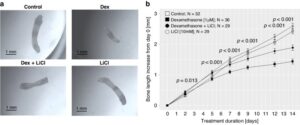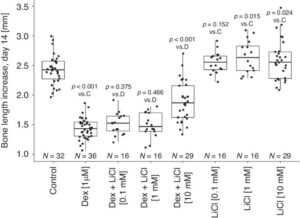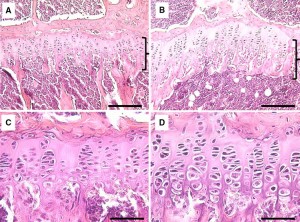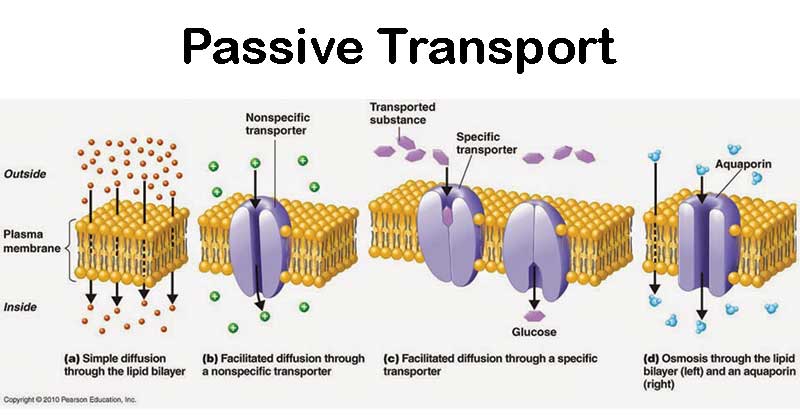One of the mechanisms by which Lithium may increase height is by phosphorylating Gsk 3 Beta. Lithium may also have an impact on the p38 pathway. Lithium also increased proliferation of stem cells.
This study shows directly that Lithium increases growth.
Lithium rescues cultured rat metatarsals from dexamethasone-induced growth failure
“lithium chloride (LiCl) is known to induce cell renewal in various tissues”
“After 14 days of culture, the length of dexamethasone-treated fetal rat metatarsals increased by 1.4 ± 0.2 mm compared to 2.4 ± 0.3 mm in control bones (p< 0.001). The combination of LiCl and dexamethasone led to bone length increase of 1.9 ± 0.3 mm (p< 0.001 vs. dexamethasone alone). By adding lithium, genes for cell cycle and Wnt/β-catenin, Hedgehog and Notch signaling, were upregulated compared to dexamethasone alone group.”
But they also studied Lithium on its own.
“local side-effects of GCs is the induction of apoptosis in growth plate chondrocytes,5through an increase in the expression of the pro-apoptotic protein Bax”<-Lithium could help reduce cellular apoptosis.
“exogenous GCs have been also shown to impair osteoblast and chondrocyte differentiation via downregulating the Wnt/β-catenin pathway, another key signaling cascade implicated in bone development and local growth plate regulation”<- we know that Lithium affects this pathway.
“Lithium chloride (LiCl) is a known GSK3β inhibitor and the treatment with LiCl increases the proliferation of human mesenchymal stem cells and also rescues from glucocorticoid-induced apoptosis of spontaneously immortalized murine calvarial osteoblasts”
“Bones treated with LiCl alone grew similarly as control (2.55 ± 0.18 mm, 2.64 ± 0.28 mm and 2.59 ± 0.33 mm increase, for 0.1 mM, 1.0 mM and 10 mM LiCl concentration, respectively; versus 2.43 ± 0.25 mm increase for control bones” so you can see that lithium increased growth versus control by about 10% versus the control group! The medium dosage grew the most so Lithium is probably biphasic(there is an optimal equilibrium dose where more has either no effect or is detrimental)
Here’s of what Lithium treated metatarsal looks like via controls:

Here’s another image that shows how significant it is:

“Lithium influenced the expression of 184 genes, of which 98 were up-regulated and 86 were down-regulated”
“a surgical osteoarthritis in vivo model, LiCl provided both in drinking water and intra-articularly was shown to improve the osteoarthritis score and to reduce the severity of cartilage destruction”
“the longitudinal bone growth setting, the results obtained from our proof-of concept experiments are supported by a previous study where lithium carbonate administration increased the width of the proximal tibia growth plate in the domestic fowl. The growth-promoting effect of LiCl was only minor in our “healthy” fetal rat metatarsals, compared to the effect in dexamethasone-impaired metatarsals”
“LiCl upregulates Axin degradation, which leads to β-catenin-induced transcriptional activity, Wnt/β-catenin pathway seems to be a plausible target that could explain the growth-promoting effect of LiCl in the dexamethasone-impaired metatarsals.”
“higher doses of LiCl have clinically been associated with undesired side effects such as tremor, dizziness, nausea, polyuria, weight gain, hypercalcemia or hypothyroidism, which therefore limits the use of high-dose LiCl treatment”<-again Lithiun is biphasic
So looks Lithium could be a height increase supplement and it is available to people!










